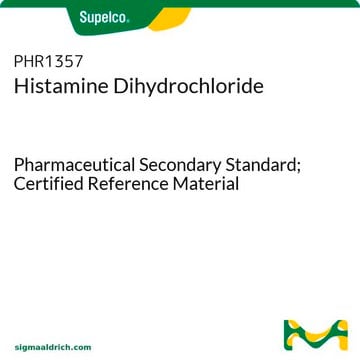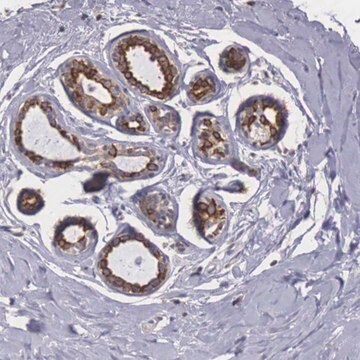H7250
Histamine dihydrochloride
≥99% (TLC), powder, endogenous histamine receptor agonist
Synonym(s):
2-(4-Imidazolyl)ethylamine dihydrochloride
About This Item
Recommended Products
product name
Histamine dihydrochloride, ≥99% (TLC), powder
Assay
≥99% (TLC)
form
powder
color
white to off-white
mp
249-252 °C (lit.)
storage temp.
2-8°C
SMILES string
Cl[H].Cl[H].NCCc1c[nH]cn1
InChI
1S/C5H9N3.2ClH/c6-2-1-5-3-7-4-8-5;;/h3-4H,1-2,6H2,(H,7,8);2*1H
InChI key
PPZMYIBUHIPZOS-UHFFFAOYSA-N
Gene Information
human ... HRH1(3269) , HRH2(3274)
Looking for similar products? Visit Product Comparison Guide
General description
Application
- as a orthograde cotransmitter in producing excitatory postsynaptic potential (EPSP)
- to determine its level in fish using HPLC (high performance liquid chromatography)
- to assess the tracheal response to antigens in guinea-pigs
Features and Benefits
Signal Word
Danger
Hazard Statements
Precautionary Statements
Hazard Classifications
Eye Irrit. 2 - Resp. Sens. 1 - Skin Irrit. 2 - Skin Sens. 1 - STOT SE 3
Target Organs
Respiratory system
Storage Class Code
11 - Combustible Solids
WGK
WGK 2
Flash Point(F)
Not applicable
Flash Point(C)
Not applicable
Personal Protective Equipment
Certificates of Analysis (COA)
Search for Certificates of Analysis (COA) by entering the products Lot/Batch Number. Lot and Batch Numbers can be found on a product’s label following the words ‘Lot’ or ‘Batch’.
Already Own This Product?
Find documentation for the products that you have recently purchased in the Document Library.
Customers Also Viewed
Our team of scientists has experience in all areas of research including Life Science, Material Science, Chemical Synthesis, Chromatography, Analytical and many others.
Contact Technical Service









